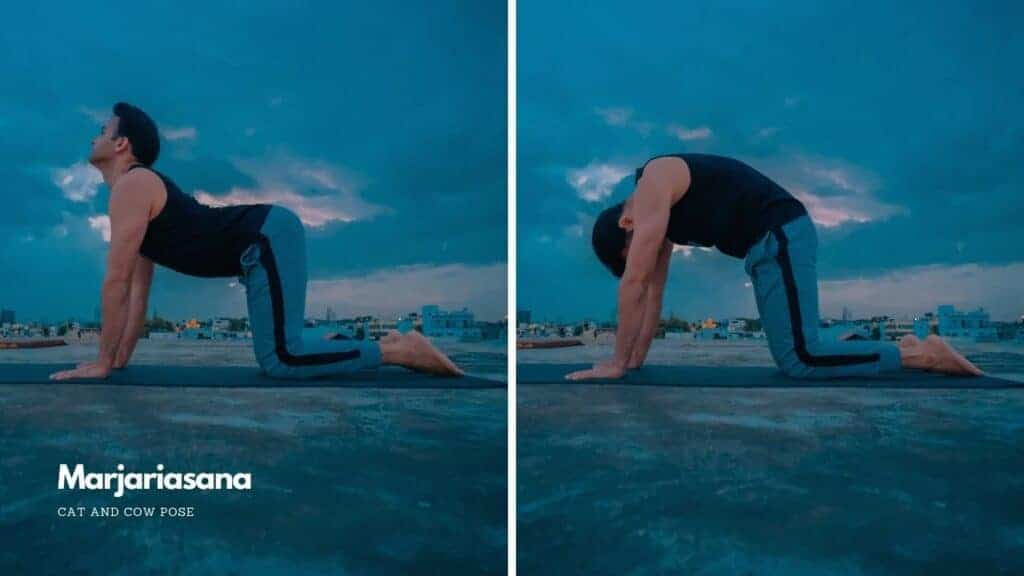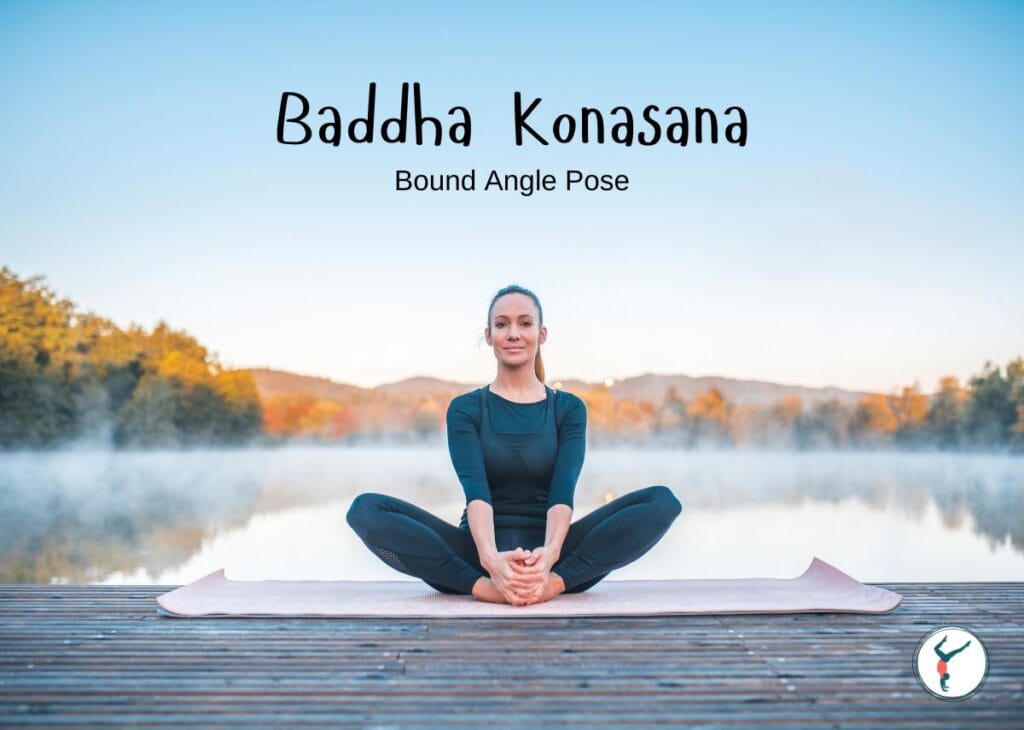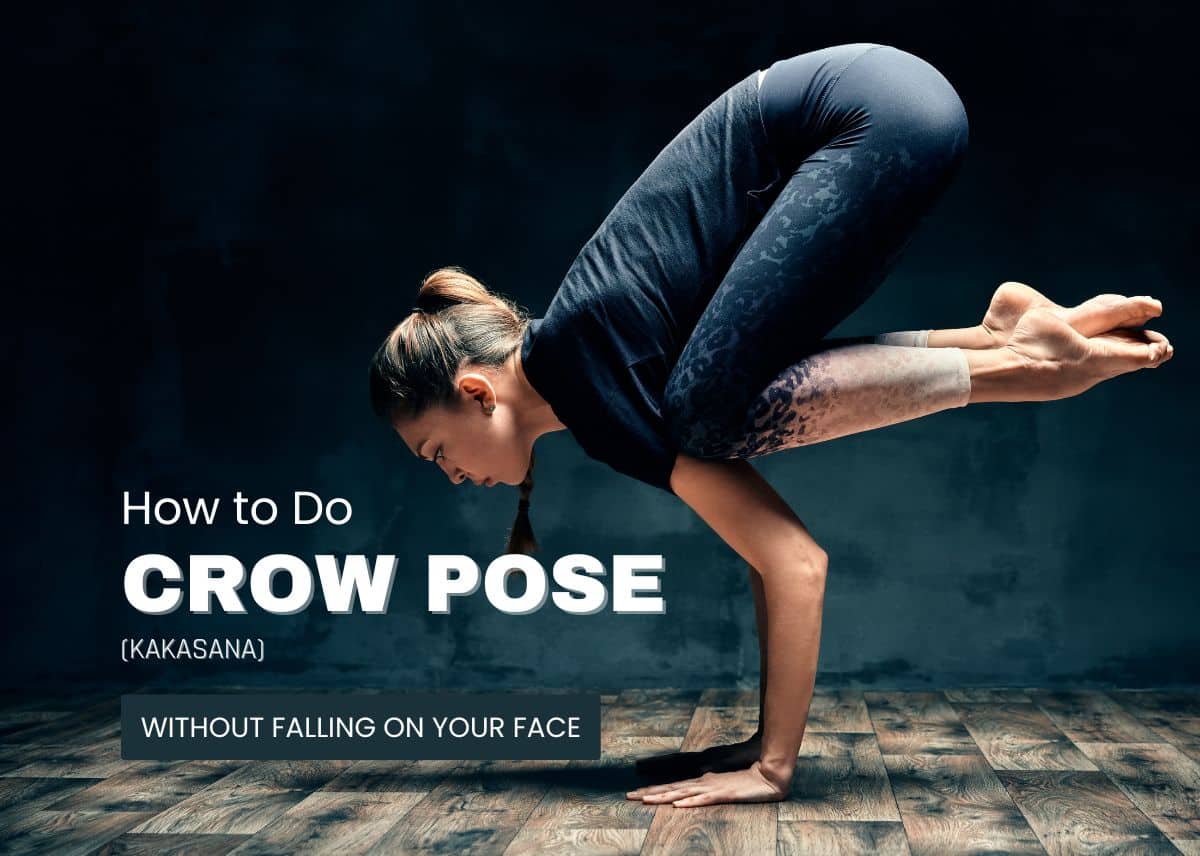To avoid falling on your face in Crow Pose (Bakasana), engage your core and create a solid foundation with your hands. Focus on distributing your weight evenly and hinge forward slowly to lift your feet.
Yoga enthusiasts often aspire to master Crow Pose, a fundamental arm balance that builds strength and focus.
Achieving this pose without toppling forward requires technique, balance, and practice. While it might seem intimidating, approaching Crow Pose step by step can prevent face planting and ensure a safe practice.
Table of Contents
By setting up with care, strengthening the core, and understanding the body’s distribution of weight, yogis can confidently rise into Crow Pose.
This balance challenge not only improves physical coordination but also enhances mental concentration, making it a coveted milestone in many yoga practitioners’ journeys.
Preparing For Crow Pose
The Crow Pose, known as Kakasana, is a cornerstone in the yoga journey towards arm balance mastery.
Achieving this pose begins well before your feet lift off the ground. It’s a delicate blend of strength, balance, and focus.
Use these next steps to build a sturdy foundation that will help you soar into Crow without the stumble. Ready?
Warm-up Exercises
Before attempting Crow Pose, warming up is crucial. Start with exercises that increase the blood flow and flexibility required for this pose.
- Cat-Cow Stretches: Sync breath with movement to awaken the spine.

- Wrist Flexes: Prepare your wrists by gently stretching them in different directions.
- Hip Openers: Poses like the Butterfly or Pigeon open up the hips for better stability.

Building Arm Strength
Arm strength is vital for holding your body up in Crow Pose. Here are exercises to develop the muscles you’ll rely on:
- Chaturanga: Practice the low plank to build endurance in your arms and shoulders.
- Plank Holds: Strengthen your core—critical for balance in Crow Pose.
- Dolphin Push-Ups: Engage shoulders and arms, preparing them for the weight-bearing aspect of Crow.
Getting Into Crow Pose
The Crow Pose, known as Kakasana in Sanskrit, is a foundational arm balance in yoga that strengthens the arms, wrists, and core.
To master this pose without falling on your face, the key lies in proper alignment and engaging your core muscles. Follow these steps to soar into Crow Pose with confidence and grace.
Proper Alignment
Proper alignment is crucial for maintaining balance in Crow Pose. Start with your hands planted firmly on the mat, shoulder-width apart. Spread your fingers wide to create a stable base.
Place your knees on the outer edges of your upper arms, near the armpits if possible. Keep your gaze forward; this will help you maintain balance.
While holding this pose, it’s vital to distribute your weight evenly through your hands. Picture pressing the floor away from you rather than sinking into your shoulders. This will keep you from tipping forward.
Engaging Core Muscles
Strength in your core prevents you from falling and supports your lift. Activate your core muscles by drawing your belly button towards your spine.
Imagine pulling everything into the center of your body. Tuck your tailbone and squeeze your inner thighs towards each other; this engagement is key for stability.
Practice lifting one foot off the ground at a time before attempting both. This action helps you tap into your core strength gradually.
Remember to breathe steadily; holding your breath will make you heavy and unstable.
- Start with hands and knees on the mat
- Spread your fingers wide
- Place knees on upper arms
- Look forward, not down
- Distribute weight evenly on hands
- Engage your core, tuck your tailbone
- Practice lifting one foot at a time
- Keep breathing steadily
With proper alignment and core engagement, you’ll fly into the Crow Pose with ease. Give yourself patience and practice consistently. Soon, you’ll master this pose without the fear of falling.
Balancing In Crow Pose
Mastering Crow Pose, or Bakasana, is a thrilling milestone for many yoga enthusiasts. Balancing in this pose can be challenging, but with the right technique, you’ll stay aloft and avoid tumbling forward.
Key elements such as shifting your weight and finding a drishti (focus on a specific point) are crucial to stay balanced. Let’s break down these components to keep you from falling on your face.

Shifting Weight Forward
Proper weight distribution is essential in Crow Pose. To find balance, focus on moving your center of gravity forward. Let’s explore step-by-step:
- Start with your hands firmly planted about shoulder-width apart.
- Bend your elbows slightly, creating a shelf with your arms.
- Place knees on the back of your upper arms, close to your armpits.
- Lift your hips and lean forward gradually.
- One foot at a time, lift your feet from the ground.
- Keep shifting forward until your toes naturally lift.
Remember, your hands and fingers are your foundation here. Spread your fingers and press down into every knuckle for stability.
Finding Drishti (focus Point)
A steady gaze, or drishti, aids in balancing. Here’s how to establish your focus point:
- Fix your gaze on a point on the floor.
- This point should be a few inches ahead of your hands.
- Maintain this gaze to keep your head and neck aligned.
- Resist the urge to look at your feet or the ground directly below.
Your drishti is not just a physical tool but also a mental anchor. It calms the mind and increases concentration.
Maintaining Crow Pose
Sticking the crow pose without a faceplant is a triumph for many budding yogis. It rewards balance, focus, and strength. Here comes the moment. Your palms press down. Knees snuggle against triceps.
You gaze forward. Now, it’s all about holding the pose without kissing the mat. Let’s explore how to keep steady and aloft, turning a potential tumble into poise and power.
Breathing Techniques
Breath is the anchor in your yoga practice. Smooth, intentional breathing maintains your stability. In crow pose:
- Inhale deeply through the nose.
- Exhale slowly, engaging the core.
- Keep breaths even and continuous.
Rhythmic breathing helps you focus and distributes weight evenly across your frame.
Adjusting Body Position
Correct alignment prevents unwanted topples. Here are tips to adjust yourself:
| Body Part | Adjustment |
|---|---|
| Hands | Spread fingers wide for a stable base. |
| Arms | Create a shelf with your upper arms for your knees. |
| Hips | Lift hips higher than you think necessary. |
| Gaze | Look forward, not down, to guide your balance forward. |
| Feet | Engage your toes, lifting heels towards the glutes. |
Small adjustments make a big difference in holding crow pose with confidence. Shift slightly, find your center, and soar. Keep practicing, and soon, gravity will lose its grip!
Common Mistakes To Avoid
Mastering the Crow Pose in yoga is no small feat. Yet, with mindful preparation, it’s well within your grasp. To elevate your practice and prevent toppling over, sidestep these common errors.
Collapsing Shoulders
Your shoulders provide the foundation for Crow Pose. Keeping them strong and engaged is critical.
Avoid letting your shoulders sag towards the ground. This can throw you off balance and stress your neck.
Instead, press the ground away actively with your hands. Your shoulder blades should move down your back. This gives you a stable base and the lift needed to stay aloft.
Leaning Backwards
Leaning too far back is a sure way to topple in Crow Pose. Balance your weight forward, towards your hands.
Your gaze should be slightly ahead of you on the floor. This keeps your momentum going forward.
As a result, your feet are more likely to lift naturally. Don’t hesitate to place a cushion in front of you. It can catch any accidental falls and boost your confidence.
Remember these tips to help keep that face-plant at bay:
- Spread your fingers wide for a solid base.
- Engage your core muscles to lift your hips.
- Keep your gaze forward, not down.
Falling Safely
Let’s face it – practicing the Crow Pose in yoga might lead to a tumble. But fear not! Falling safely is a skill you can learn. It’ll help you avoid getting hurt and boost your confidence.
Ready to face your fears? Check out these tips on nailing that Crow Pose without the face-plant!
Learning To Tuck And Roll
A safe fall begins with a controlled tuck and roll. It’s a neat gymnastics trick that turns falling into rolling. Here’s how to master it:
- Start small: Practice a forward roll on a soft mat.
- Lead with your shoulder: When falling, turn to one side.
- Bend your chin: Tuck it towards your chest to protect your head.
- Use momentum: Roll over your shoulder, not your neck.
- Keep it tight: Hug your knees as you roll to help the motion.
Remember, practice makes perfect. A few rounds of rolling will make you a pro!
Using Props For Support
Using props can save the day when you’re learning the Crow Pose. They provide extra support and reduce the risk of a face-first fall. Let’s see how to use props effectively:
| Prop | Use |
|---|---|
| Yoga Block | Place under feet for a height boost. |
| Bolster | Set in front of hands to cushion your fall. |
| Strap | Wrap around arms to keep them in place. |
With props, you can focus on balance, not the floor! So grab a block, bolster, or strap and feel the support they offer.
Practice Tips
Crow Pose, known as Bakasana in Sanskrit, is a challenging arm balance that can be daunting.
Fear not, for with the right practice tips, falling on your face becomes a thing of the past.
Mastering this pose requires patience, attention to technique, and a sprinkle of courage. Below are key strategies to ensure a safe and steady journey into your Crow Pose practice.
Consistency Over Perfection
Becoming steady in Crow Pose isn’t about nailing it perfectly on the first try. It’s about small, regular steps that build strength and confidence over time. Consider these actionable tips to maintain consistency:
- Set a routine: Incorporate Crow Pose into your daily practice, even for just a few minutes.
- Track progress: Keep a journal of your practice and celebrate small improvements.
Listen To Your Body
As you work towards the Crow Pose, tuning into your body’s signals is crucial. Pushing too hard can lead to injury. Here’s how you can stay safe:
- Notice discomfort: If a pose hurts, ease off and modify the posture.
- Pace yourself: Advance at a rate that feels comfortable for your body.
Remember, balance in yoga is as much about mental focus as it is about physical capacity. So breathe deeply, keep a playful attitude, and before you know it, you’ll be flying high in your Crow Pose!
Conclusion
Embarking on your Crow Pose journey requires patience and perseverance. Use the tips shared to build strength and balance methodically.
Remember, mastery of Bakasana unlocks not just physical prowess, but also a deepened yoga practice. Keep practicing, stay focused, and you’ll soar without the fear of falling.
Namaste!
Also Read:







